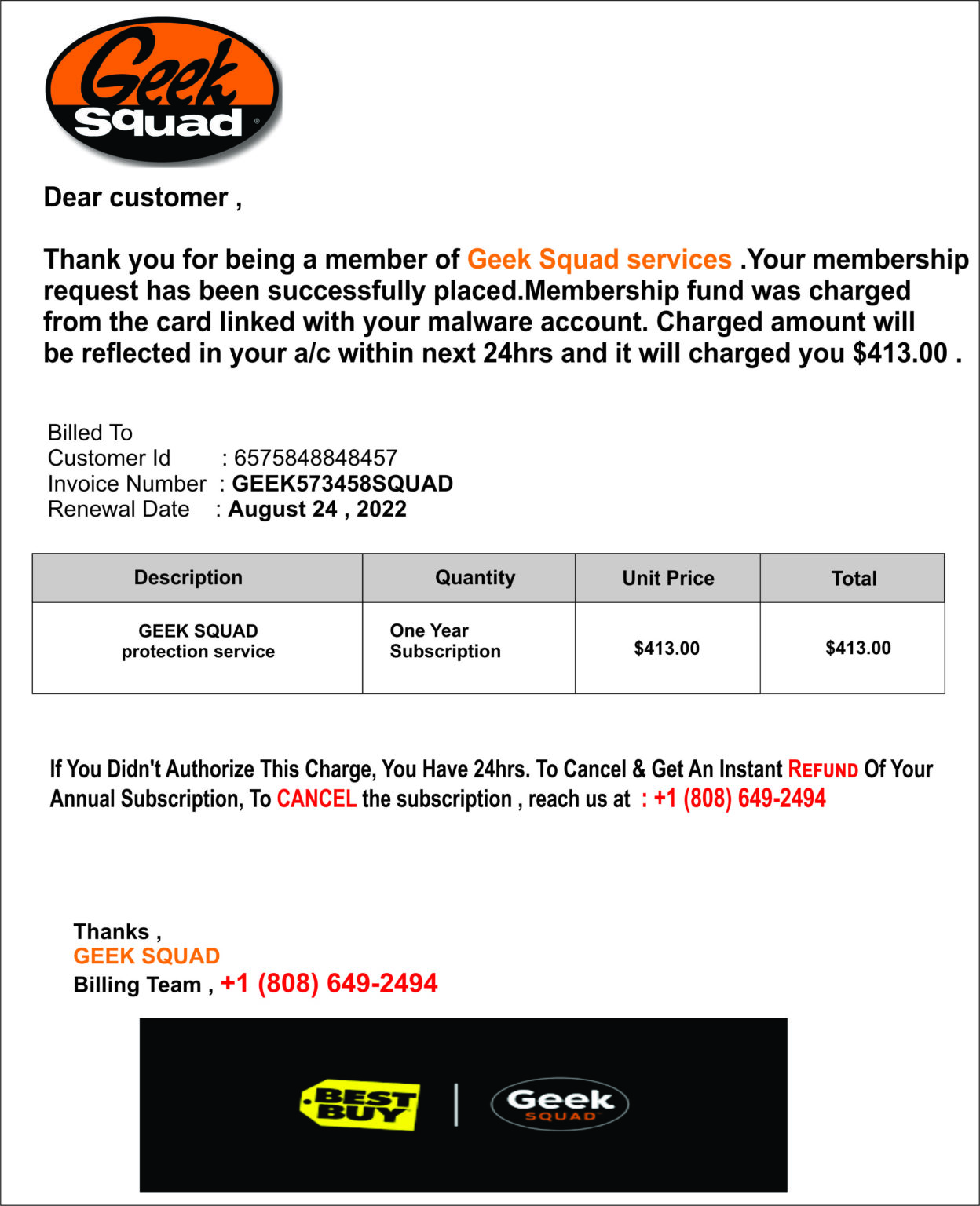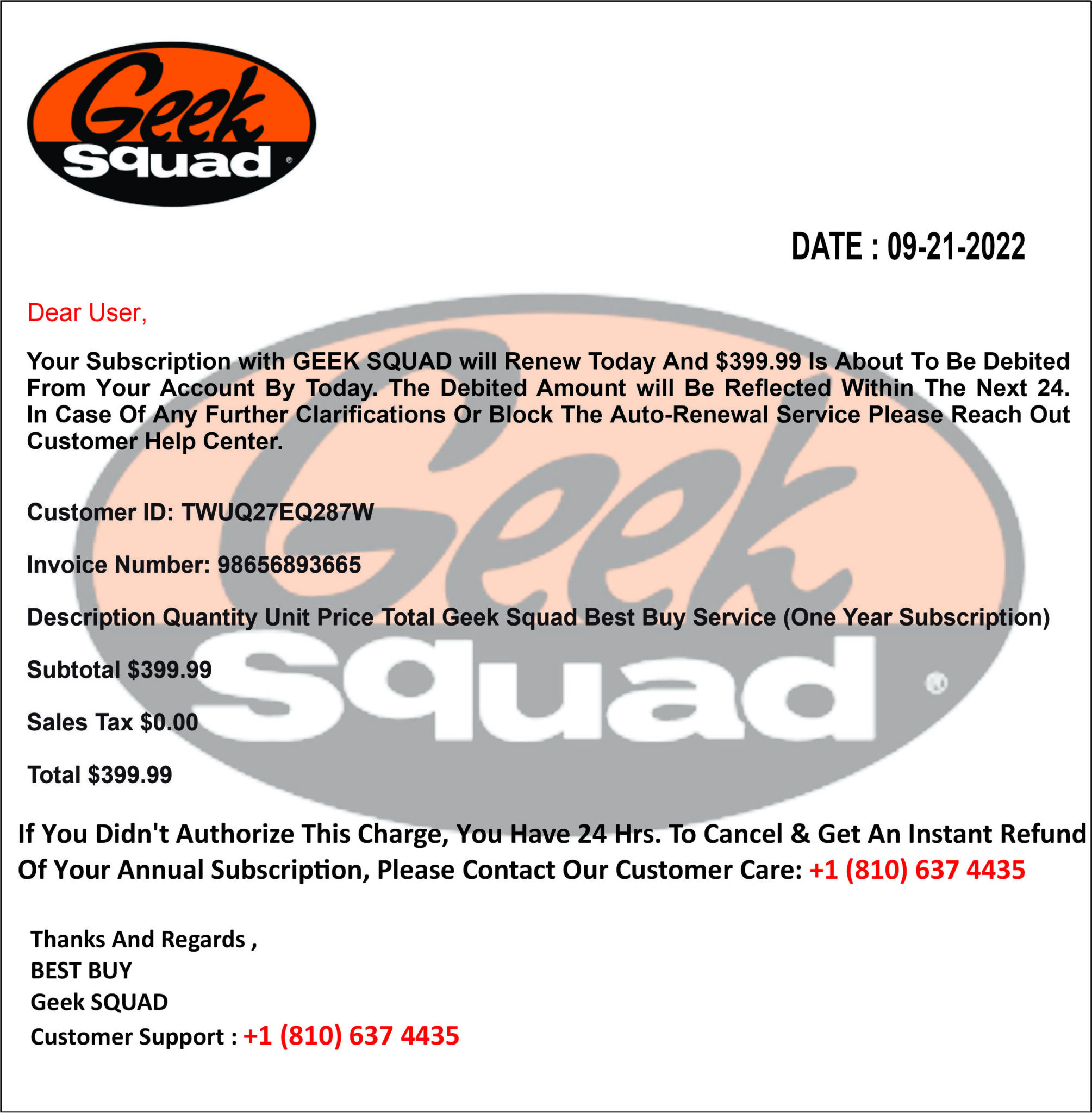Imagine this—you get an email from what looks like McAfee. It says you owe money for a service or subscription, and there's even an invoice attached. But wait—is it legit? Or is it another scam trying to steal your hard-earned cash? Let’s dive into the world of McAfee scam invoices and uncover how to protect yourself from these sneaky tactics.
In today’s digital age, cybercriminals are getting craftier by the day. They use fake invoices to trick people into paying for services they didn’t sign up for. The worst part? These scams can happen to anyone, even if you’ve never used McAfee products. So, buckle up because we’re about to break down everything you need to know to stay safe.
Don’t worry—we’ve got your back. This guide will walk you through understanding McAfee scam invoices, recognizing the red flags, and taking action to avoid falling victim. Whether you’re tech-savvy or just starting out, this info is crucial for anyone using the internet.
- Maligoshik Nude Leaks The Truth Behind The Controversy That Everyones Talking About
- Undress Ai Ethical Concerns And Societal Impact
- Bollyflix
- Full4movies Your Ultimate Destination For Movie Entertainment
- Desiremoviesbollywood
What Exactly Is a McAfee Scam Invoice?
A McAfee scam invoice is basically a fraudulent document designed to make you think you owe money to McAfee. These scams often come in the form of emails or letters that look official, complete with logos and fancy wording. But here’s the kicker—they’re not from McAfee at all. Instead, they’re sent by scammers hoping to trick you into paying them.
These scams prey on people’s trust in well-known brands. By pretending to be McAfee, they try to convince victims that they have an outstanding bill or subscription fee. And let’s face it, who wouldn’t panic when they see an invoice from a big-name company? That’s exactly what these scammers count on.
Now, let’s talk numbers. According to a report by the Federal Trade Commission (FTC), phishing scams, including fake invoices, cost consumers millions of dollars each year. In fact, the average loss per victim can range anywhere from $500 to thousands of dollars. Yikes, right?
- Maligoshik Onlyfans Leaks The Real Story Behind The Viral Sensation
- Wasmo Somali Channel Telegram 2025
- Miaz And Girthmaster Full Video
- Jackerman Videos Behind The Scenes Whats Next Watch Now
- Unveiling Daniel Giersch His Life Controversies Explained
How Do McAfee Scam Invoices Work?
Scammers use a variety of tactics to pull off their schemes. Here’s how it typically goes down:
- Email Spoofing: They send emails that appear to be from McAfee, complete with a professional layout and language.
- Invoice Attachments: The email includes an attachment or link to a fake invoice, often in PDF format.
- Urgent Language: To create panic, the email uses urgent phrases like “Immediate Payment Required” or “Your Account Will Be Suspended.”
- Payment Requests: They ask for payment via methods like wire transfers, gift cards, or cryptocurrencies, which are hard to trace.
Once you fall for it and make the payment, it’s nearly impossible to get your money back. Scammers vanish into thin air, leaving you high and dry. That’s why it’s so important to be vigilant and know what to look for.
Recognizing the Red Flags
So, how can you tell if that invoice you received is legit or a scam? Here are some key warning signs:
1. Check the Sender’s Email Address
Legitimate emails from McAfee will always come from an official domain, like @mcafee.com. If the email address looks suspicious or doesn’t match, it’s probably a scam. For example, watch out for addresses like “mcafee-support123@gmail.com” or “billing@mcafee-security.com.”
2. Look for Grammar and Spelling Mistakes
Scammers aren’t always the best writers. Their emails often contain typos, awkward phrasing, or grammatical errors. A real company would never send out correspondence with such mistakes.
3. Beware of Urgent Language
If the email uses words like “urgent,” “immediate,” or “critical,” it’s likely a scam. Scammers want you to act quickly without thinking things through. Take a deep breath and verify the information before doing anything.
4. Verify the Invoice Details
Check the invoice for inconsistencies. Are the dates correct? Does the amount seem reasonable? If anything looks off, it’s a red flag. Plus, McAfee rarely sends unsolicited invoices, so that alone should raise suspicion.
Steps to Protect Yourself
Now that you know what to look for, here’s how to protect yourself from McAfee scam invoices:
1. Never Click on Suspicious Links
Hover over any links in the email to see where they lead. If the URL looks suspicious or doesn’t match McAfee’s official website, don’t click it. Always go directly to McAfee’s site by typing the address into your browser.
2. Contact McAfee Directly
If you’re unsure about an invoice, contact McAfee customer support to confirm its authenticity. Use the contact information on their official website, not the details provided in the suspicious email.
3. Enable Multi-Factor Authentication
Make it harder for scammers to access your accounts by enabling multi-factor authentication (MFA). This adds an extra layer of security, even if they manage to get your login credentials.
4. Stay Educated
Keep up with the latest scams and tactics used by cybercriminals. Knowledge is power, and the more you know, the better equipped you’ll be to spot and avoid these traps.
Common McAfee Scam Variations
While fake invoices are one of the most common McAfee scams, there are others to watch out for. Here are a few examples:
- Technical Support Scams: Scammers call pretending to be McAfee tech support, claiming there’s an issue with your software. They then try to convince you to pay for unnecessary repairs.
- Subscription Renewal Scams: You receive a notice saying your McAfee subscription is about to expire and needs to be renewed. Again, these are usually fake.
- Phishing Emails: These emails ask for sensitive information like passwords or credit card numbers, claiming it’s needed to verify your account.
Stay alert and remember—McAfee will never ask for personal info via email or unsolicited calls.
What to Do If You’ve Fallen Victim
Unfortunately, even the most cautious people can fall prey to scams. If you’ve already paid a McAfee scammer, here’s what you should do:
1. Report the Scam
File a complaint with the FTC and your local authorities. Provide as much detail as possible, including copies of the email and any payment information.
2. Contact Your Bank or Credit Card Company
Let them know about the fraudulent transaction. They may be able to reverse the charge or issue you a new card.
3. Monitor Your Accounts
Keep a close eye on your financial accounts for any additional suspicious activity. Consider freezing your credit temporarily to prevent further damage.
4. Spread the Word
Tell friends and family about the scam so they can avoid falling victim. Sharing your experience might even help others recognize warning signs.
Why McAfee Scams Are So Dangerous
These scams aren’t just annoying—they can have serious consequences. Falling victim to a McAfee scam could result in:
- Financial loss
- Identity theft
- Damage to your credit score
- Stolen personal information
And let’s not forget the emotional toll. Being scammed can leave you feeling violated, embarrassed, and stressed. That’s why prevention is key. Taking proactive steps to protect yourself can save you a lot of heartache down the road.
Resources to Help You Stay Safe
There are plenty of resources available to help you stay one step ahead of scammers. Here are a few we recommend:
1. McAfee’s Official Website
Visit mcafee.com for the latest updates on known scams and how to avoid them. Their security tips section is a goldmine of valuable information.
2. Federal Trade Commission (FTC)
The FTC provides resources and support for victims of scams. They also offer tips on how to recognize and report fraudulent activity.
3. Better Business Bureau (BBB)
The BBB maintains a database of scams and scam artists. You can search their site to see if a particular scam has been reported before.
Final Thoughts
McAfee scam invoices are a growing problem, but armed with knowledge, you can outsmart the scammers. By recognizing the warning signs, taking preventive measures, and staying informed, you can protect yourself and your wallet. Remember, if something seems too good (or bad) to be true, it probably is.
Now, it’s your turn. Share this article with your friends and family to help them avoid becoming victims. And if you’ve encountered a scam, leave a comment below to warn others. Together, we can fight back against cybercrime and keep our digital world safer for everyone.
Table of Contents
- Vegamovies 2025 18 Your Ultimate Guide To The Future Of Adult Entertainment
- Top Sophie Rain Photos Videos
- Ullu Telugu Web Series Movierulz Your Ultimate Guide To Bingewatching
- Undress Ai Ethical Concerns And Societal Impact
- Martin Kretz Divorce Whats Happening With The Lagence Star


